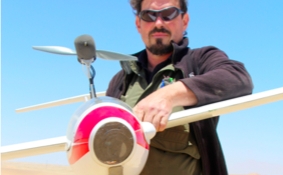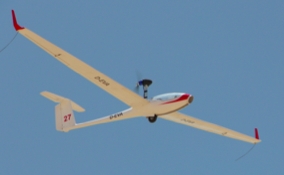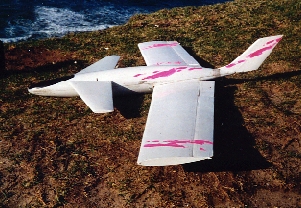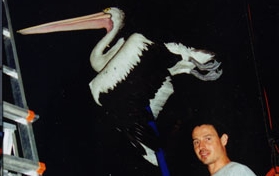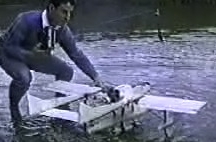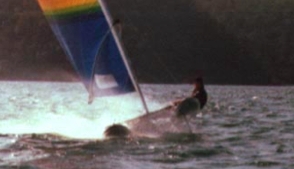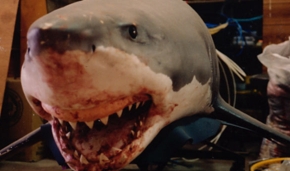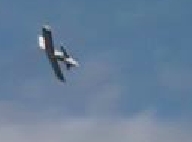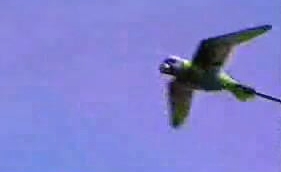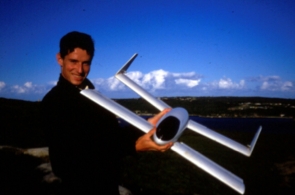
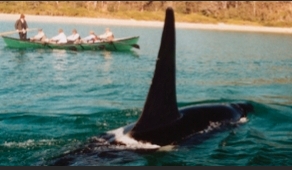
Planing catamarans
Greg and Alex Cirrigottis developed the itza cat in the late 1970s whilst Greg
was still in High
school. They met at Narabeen Lakes where Greg was testing a wing-rigged hydrofoil borne
catamarran. Unlike all other sailing catamarans on the market, the itzacat had planing hulls
rather than thin displacement hulls. This enabled the cat to achieve extraordinary speeds
around 20kts. The hulls are angled so that the planing hull is flat on the water when the
other hull is flying. Click the second itza cat image for 2min fullscreen video 40mb quicktime
.mov
school. They met at Narabeen Lakes where Greg was testing a wing-rigged hydrofoil borne
catamarran. Unlike all other sailing catamarans on the market, the itzacat had planing hulls
rather than thin displacement hulls. This enabled the cat to achieve extraordinary speeds
around 20kts. The hulls are angled so that the planing hull is flat on the water when the
other hull is flying. Click the second itza cat image for 2min fullscreen video 40mb quicktime
.mov
Step Hulls
Greg, and Alex developed the planing hull catamaran further with a 17 foot long
step hull cat.
The hull shape was based on Greg’s experimental experience and knowledge of seaplane
floats. A stephull is a hull with an abrupt change in level along its length so that when
travelling at speed, the water in contact with the bottom of the boat encounters air space
rather than boat bottom. A stephull travelling at speed may only have a small percentage of
its actual length in contact with the water generating friction, whilst a conventional planing
hull will have a large percentage constantly in contact. A short wide section of planing surface
is more efficient than a long narrow surface. The step also allows the crew to manually
adjust the pitch trim of the boat for different conditions. The ride quality of a flat bottom
planing cat is much harsher and bumpier than a displacement cat and is more like the ride of
a speed sailboard. Greg’s later StepHull designs incorporated Vee bottom and strakes to
improve ride quality and rig stability.
The hull shape was based on Greg’s experimental experience and knowledge of seaplane
floats. A stephull is a hull with an abrupt change in level along its length so that when
travelling at speed, the water in contact with the bottom of the boat encounters air space
rather than boat bottom. A stephull travelling at speed may only have a small percentage of
its actual length in contact with the water generating friction, whilst a conventional planing
hull will have a large percentage constantly in contact. A short wide section of planing surface
is more efficient than a long narrow surface. The step also allows the crew to manually
adjust the pitch trim of the boat for different conditions. The ride quality of a flat bottom
planing cat is much harsher and bumpier than a displacement cat and is more like the ride of
a speed sailboard. Greg’s later StepHull designs incorporated Vee bottom and strakes to
improve ride quality and rig stability.
Greg design registered this craft in 1982. To the left is a fading photograph of
a twin masted
model step-hull prototype from 1980 when Greg was in high school.
model step-hull prototype from 1980 when Greg was in high school.
The 17 foot step cat was fitted with step ventilators leading from the deck so
that air could
rapidly fill the place behind the step and allow the step to clear and the boat to plane quickly.
With the ventilators the transition to planing was preceeded by slurping and gurgling noises
similar to sucking on the bottom of a milkshake ! Photographs of the 17 foot step-hull cat
will be posted as soon as they can be tracked down!
rapidly fill the place behind the step and allow the step to clear and the boat to plane quickly.
With the ventilators the transition to planing was preceeded by slurping and gurgling noises
similar to sucking on the bottom of a milkshake ! Photographs of the 17 foot step-hull cat
will be posted as soon as they can be tracked down!
Copy Cats ?
Sailing enthusiasts may note that the same logical step hull design principles
have been
recently applied to a 60ft ocean racing sailing cat by French sailor Yves Parlier. Yves’ boat
designer also was inspired by the fast and efficient hulls of Seaplanes.
recently applied to a 60ft ocean racing sailing cat by French sailor Yves Parlier. Yves’ boat
designer also was inspired by the fast and efficient hulls of Seaplanes.
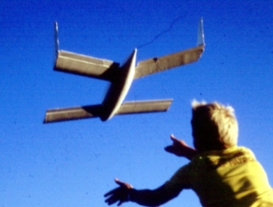
Footage on Vimeo
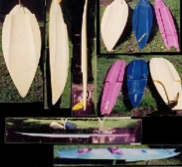
To the lower left is an example of the high performance Step-hull sailboards
shaped by Greg’s
brother Bruce McKee based on Greg’s research of seaplane and racing hydroplane step hulls.
brother Bruce McKee based on Greg’s research of seaplane and racing hydroplane step hulls.
These boards from 1988 have astonishing performance and suffer far less from the
drag
increases due to the porpoising or pitch variations of conventional boards. They incorporate
tunnel hulls trapping air beneath them and run on only two or three points of minimum
wetted surface area when at speed. These craft all have very sharp edges to their planing
surfaces so that spray is cleanly released and thrown outwards rather than clinging to the
sides as occurs on round bildge craft. The larger yellow board features step ventilators to
facilitate rapid transition onto the step.
increases due to the porpoising or pitch variations of conventional boards. They incorporate
tunnel hulls trapping air beneath them and run on only two or three points of minimum
wetted surface area when at speed. These craft all have very sharp edges to their planing
surfaces so that spray is cleanly released and thrown outwards rather than clinging to the
sides as occurs on round bildge craft. The larger yellow board features step ventilators to
facilitate rapid transition onto the step.
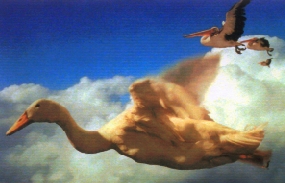
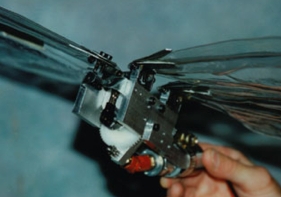
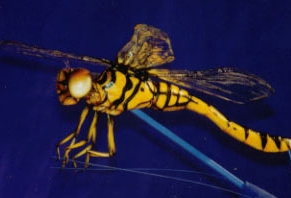
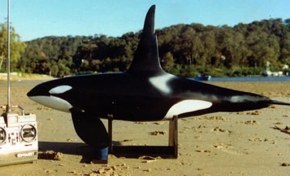
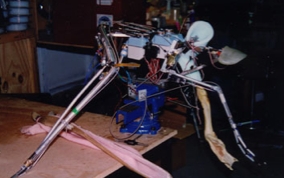
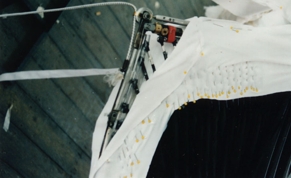

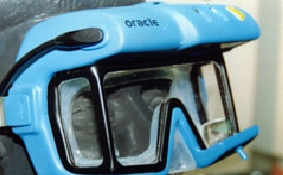
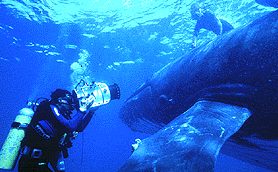
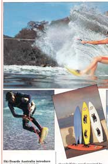
Fluid Knowledge
Greg grew up by the sea and was privileged to enjoy all manner of sea and sky
sports. Hobbies included designing and experimenting with
hydroplanes, hydrofoils, seaplanes, rc gliders, robotic whales, birds and flying possums, and led to studying Zoology, marine technology and fluid
dynamics at Uni. Greg has a practical and theoretical knowledge of fluid mechanics and water and aircraft. This applies not just to craft designed
by humans but also flying and swimming organisms. Greg has designed and built full size ocean going artificial whales , swimming sharks, and
birds that actually fly in the air as gliders and maneuver only using natural bird wing movements rather than flaps and ailerons. The small radio
control free swimming orca built as an experiment in the 1980s was followed years later by a full size ocean going orca built for “Killers in Eden”.
hydroplanes, hydrofoils, seaplanes, rc gliders, robotic whales, birds and flying possums, and led to studying Zoology, marine technology and fluid
dynamics at Uni. Greg has a practical and theoretical knowledge of fluid mechanics and water and aircraft. This applies not just to craft designed
by humans but also flying and swimming organisms. Greg has designed and built full size ocean going artificial whales , swimming sharks, and
birds that actually fly in the air as gliders and maneuver only using natural bird wing movements rather than flaps and ailerons. The small radio
control free swimming orca built as an experiment in the 1980s was followed years later by a full size ocean going orca built for “Killers in Eden”.
Wakeboards
Water sports enthusiasts may be
interested to note that Greg’s brother
Bruce, besides being one of the world’s
top Surfboard shapers and innovators also
produced the world’s first production
wakeboard in the early 1980s, the McSki
or SSS skiboard.
interested to note that Greg’s brother
Bruce, besides being one of the world’s
top Surfboard shapers and innovators also
produced the world’s first production
wakeboard in the early 1980s, the McSki
or SSS skiboard.

Videos (require quicktime)
Robotic swimming Sharks 5MB .mov
Flying Rainbow Lorrikeet 1.6MB
.mov
.mov
(extreme language warning) 1980s
Own Design Aerobatic seaplane.
First ever attempt at designing or
flying an RC powered plane 1980.
First ever attempt at designing or
flying an RC powered plane 1980.
The float design similar to Greg’s
sailing craft
sailing craft
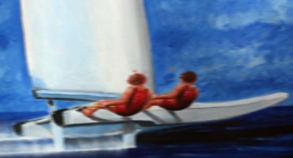
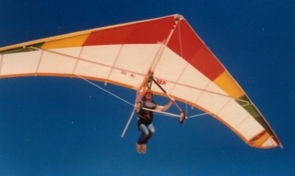
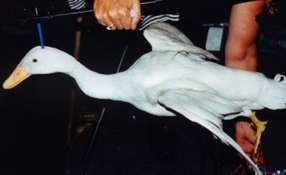

Images
Early 1980s experiments
Sculpted and built by Greg, this full sized
replica of “Old Tom” can dive and surface and
has a working blowhole. It is on location here
in Twofold bay, Eden.
replica of “Old Tom” can dive and surface and
has a working blowhole. It is on location here
in Twofold bay, Eden.
A full sized Humback submersible built for a
television series and operated in open ocean.
television series and operated in open ocean.
It is a fully operational wet submarine.
An animatronic great white able to operate in
sea water alongside real sharks.
sea water alongside real sharks.
Click image for Video
Swept forwards wing canard with
NACA 66-012 laminar flow
symetrical section fuselage and
wings. Designed in 1985
NACA 66-012 laminar flow
symetrical section fuselage and
wings. Designed in 1985
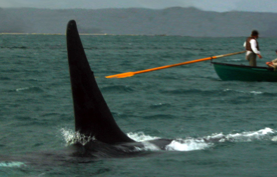
This free swimming radio control submarine
model of Old Tom was made in 1985 and
maneuvers in the same manner as a real orca,
using tail and pectoral flukes. The body shape
of an orca is a low drag, natural laminar flow
form similar to a naca 66-020 airfoil section.
model of Old Tom was made in 1985 and
maneuvers in the same manner as a real orca,
using tail and pectoral flukes. The body shape
of an orca is a low drag, natural laminar flow
form similar to a naca 66-020 airfoil section.
The full size replica of Old Tom in Eden about
to dive. The streamlined form of the orca
weighs around 6 tonnes yet is maneuverable
and quite easy to accelerate to speed. A real
orca can swim at speeds up to 60km/hr . Fast
enough to barefoot waterski behind.
to dive. The streamlined form of the orca
weighs around 6 tonnes yet is maneuverable
and quite easy to accelerate to speed. A real
orca can swim at speeds up to 60km/hr . Fast
enough to barefoot waterski behind.
A different Great White to the one above, this
version sculpted by Paul Trefry and painted in
silicone by Greg.
version sculpted by Paul Trefry and painted in
silicone by Greg.
Tandem wing design verification model made in
1986 during Aeronautical engineering study at
Uni. The fuselage form is based on the
laminar flow naca 66-018 airfoil section found
in the bodies of Tuna fish, and similar to the
Orca above.
1986 during Aeronautical engineering study at
Uni. The fuselage form is based on the
laminar flow naca 66-018 airfoil section found
in the bodies of Tuna fish, and similar to the
Orca above.
The high speed design is hand launched at
Dobroyd lookout in Sydney. The front forward
swept wing has the same wing area as the
rear wing and controls pitch.
Dobroyd lookout in Sydney. The front forward
swept wing has the same wing area as the
rear wing and controls pitch.
This forward swept wing canard uses the tuna
fish like naca 66-012 laminar flow sections for
all flying surfaces and fuselage. It is extremely
aerobatic and has identical performance flying
upside-down as right way up. The extremely
low drag gives it very high speed despite
having no engine.. Unstallable in normal flight
fish like naca 66-012 laminar flow sections for
all flying surfaces and fuselage. It is extremely
aerobatic and has identical performance flying
upside-down as right way up. The extremely
low drag gives it very high speed despite
having no engine.. Unstallable in normal flight



